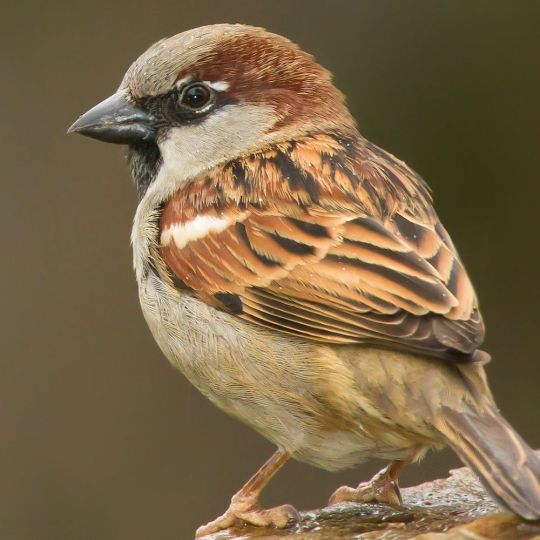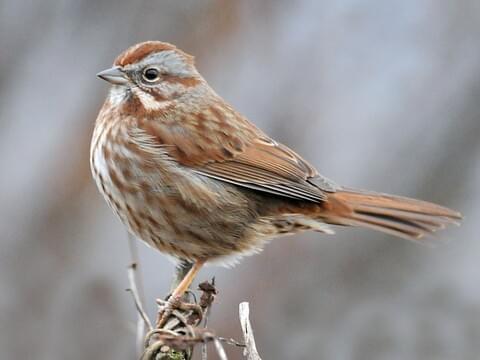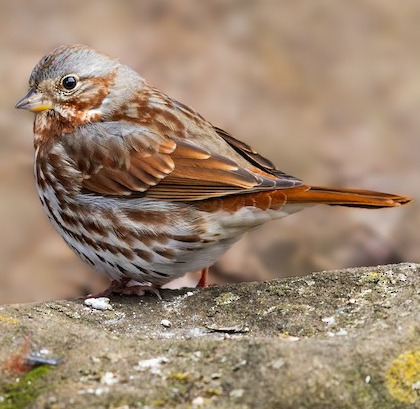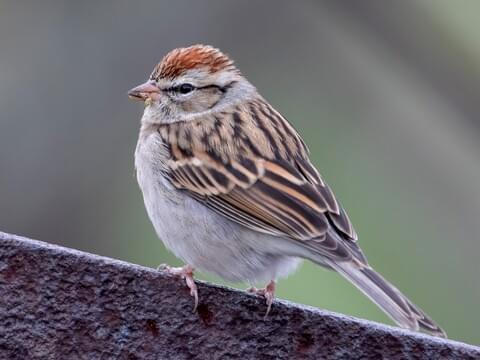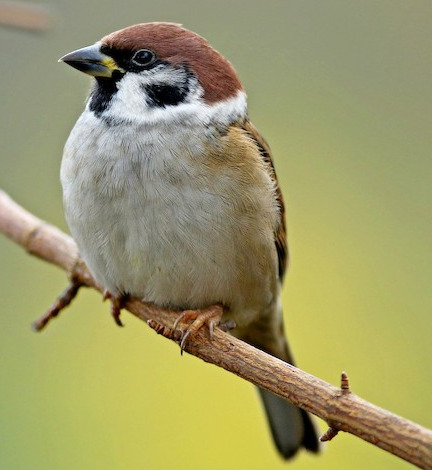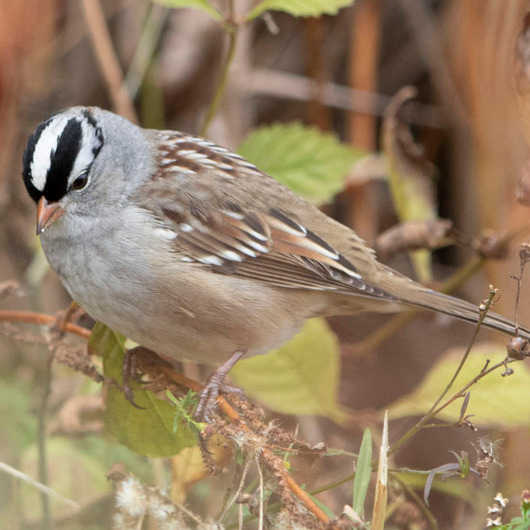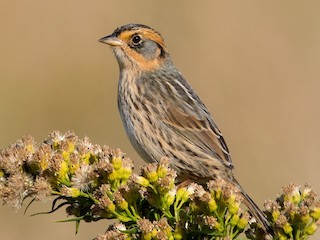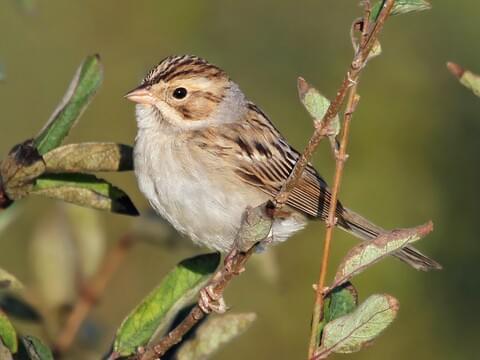#Saltmarsh sparrow
Explore tagged Tumblr posts
Text

Saltmarsh Sparrow (Ammospiza caudacuta)
May 12, 2025
Cedar Bonnet Island section of Edwin B. Forsythe National Wildlife Refuge, Stafford Township, New Jersey
This is the first time I've ever seen this endangered bird. It lives in salt marshes along the east coast of the U.S., habitat that is quickly disappearing as the marshes are filled in to build beach houses.
#bird#birds#photographers on tumblr#saltmarsh sparrow#Ammospiza caudacuta#birdblr#birb#birbs#ornithology#birblr#nature#animals#wildlife photography#endangered animals#endangered species
500 notes
·
View notes
Text





the saltmarsh sparrow is a small sparrow found in salt marshes along the atlantic coast of the united states of america. they were previously considered conspecific with the nelson’s sparrow, a similar species. sadly, saltmarsh sparrow numbers are sharply declining, primarily due to habitat loss; they are classified as endangered. the salt marsh habitat that is crucial to their survival is heavily fragmented, leading to smaller groups and less genetic diversity. during the summer, these sparrows primarily feed on grasshoppers, flies, small crustaceans, and moths; in the winter, when insects are not available, they feed on seeds. these birds are not territorial, and frequently share large home ranges with other saltmarsh sparrows. they are not monogamous, and many broods are from mixed parentage. only females display parental care; they are solely responsible for incubating the eggs and feeding and raising the young.
272 notes
·
View notes
Text


EXPLANATIONS:
- Saltmarsh obligate- there are only a few North American birds that can claim that title.
- Saltmarsh obligate- there are only a few North American birds that can claim that title.
- Doesn't hold territory- neither the males or females are territorial!
- Doesn't pair up- this isn't weird for birds, but for sparrows it is a bit odd. They usually like to pair up to raise kids but not these guys.
- Run more than they fly- that's somewhat common for grassland sparrows but we used to call them mice in the field.
- Only 'whisper sings'- so usually when birds whisper sing its because a mate is nearby and they're trying to really impress her by saying "ooh look how controlled my voice is, I can sing real quiet and still sound great" (or at least that's a theory). These guys ONLY whisper sing. But they do it whenever they're singing. So a male will get on some grass to advertise himself and belt out this lil garbled whisper song that sounds like you scratched up a CD of electrical static.
- Only Mama in the building- the female does EVERYTHING for the nest and the male doesn't help.
- Pollrunner note: LOVE the enthusiasm! LOVE to see a little brown bird who is extremely weird!!
American White Pelican
- One of the largest birds native to north america. known for stealing fish from other birds in midair. cool down by exposing their spine* through their mouths. this borders on appearance but they have a stretchy mouth pouch that's very fucked up to see in action
- Pollrunner note: *the bit about the spine isn’t true. Quite a few pelicaniformes that I know of do this, and what it is is inverting their pouches over their necks and chests. The weird look of it appearing to be like the spine is called glottis exposure! I’ll add a few fun little things I know about American white pelicans just from observing them—they’ll try to eat just about anything, including bushes that do not fit in their mouths. They also sometimes play with their food (at least, in captivity,) and will eat it once they get bored chasing it, throwing it and catching it, and shaking it around underwater. They’d also probably be considered apex predators if they weren’t so quick to leave their nests in response to threats. I don’t think there are any animals that eat healthy adult white pelicans. Isn’t that crazy? Please, correct me if I’m wrong!
78 notes
·
View notes
Text
The State Birds Initiative: New Jersey (#3)
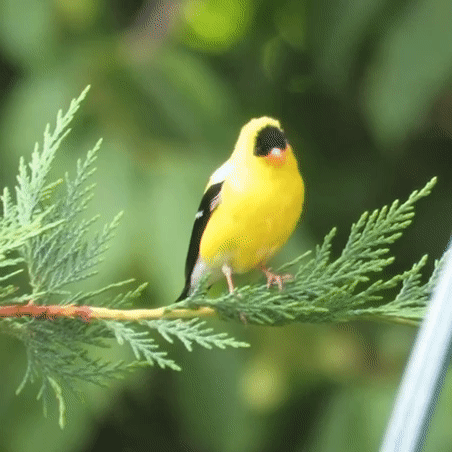
Welcome to the third official poll of the State Birds Initiative! Before the poll, though, one thing real quick. My suggestion is that you read the post below before voting in the poll below. That's especially important if you're lacking any context about the birds being presented as the new (or old) State Bird of the Garden State, New Jersey. This is to be fully informed as to why these are being presented, and to make your choices appropriately. Lastly, some of these birds, you will notice, may go against some of the rules listed in the introduction post. All is explained after the jump where the explanations are, I promise you that. But with that...OK! Here's the poll! If you'd like to see the last post, check out Pennsylvania (Poll | Results)
So, with that done...New Jersey.

OK, I'll be honest, I have very little history with New Jersey. Only been there a few times, I've driven through it a decent number of times, and I mostly know it by reputation. But, uh...for whatever reason, every trip I take that requires me to go through New Jersey, NJ is the worst driving portion of that trip. Basically every time. Maybe that's a New Jersey turnpike problem, maybe that's unhappy coincidence. Hell, maybe it's conservation bias from being a New Yorker (upstate, but I've gone to the city regularly throughout my life). Or maybe it really is cultural reputation for New Jersey trickling in to my subconscious (looking at you, Jersey Shore). But either way...I have complicated feelings about New Jersey.
But this post is NOT about my personal geographic experience. Mostly. It's about birds! So, let's get into New Jersey objectively. Third state admitted into the union, state capital is Trenton, largest city is Newark, and it's the most densely populated state in the country. Famous for being the origin of electricity in civic infrastructure, as well as the home of their favorite son, Thomas Alva Edison. Which...when you learn more about the guy, makes you wonder about New Jersey as a whole. MOVING ON! It was a major staging point in the American Revolutionary War, and ever since, it's been all about freedom. Even though you can't pump your own gas there. Although, to their credit, the Statue of Liberty is actually technically in New Jersey waters. Yeah. That's absolutely true. But, like...it's spiritually a New York landmark, so we'll let it slide.

Now, here's the thing about New Jersey, seriously and truly. It has a bad reputation because of media and New York City. This is for two more specific reasons, from what I can tell. One, the New Jersey Turnpike sucks, and it smells like raw sewage due to its proximity to industrial factories and processing plants. And unfortunate way to experience the state, and the main way I've experienced New Jersey personally. So, that's one, and it's not indicative of the state's quality. Number two is simply the fact that it's a hub for commuters, with lots of people going to either NYC or Philadelphia for work. Because of that, Jersey itself gets pieces of their cultures combined, which also makes it a very easy target with a unique accent. So, not Jersey's fault.
In reality, it's quite a nice state with more natural area than you'd expect for somewhere so densely populated. New Jerseyans, unsurprisingly love their state...and aren't big fans of tourists, from discourse I see online. It's a small state, which makes it crowded enough. Plus, there are tourist attractions there. There's the massive American Dream Meadowlands mall, there's MetLife Stadium, there's Six Flags Great Adventure, there's...Trenton. Actually, no, Trenton sucks, I stand by that assessment. But it's also a highly diverse state, with the highest proportion of Hinduism followers in the country, as well as the densest collection of LGBTQ+ social centers (AKA gayborhoods), amongst other things. NJ does deserve more credit.
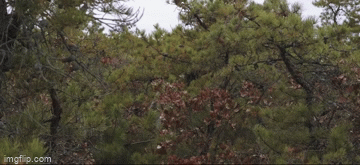
Now with that said, let's talk about the natural world of New Jersey, because there is a surprising amount to talk about. 45% of the land is covered in mixed deciduous-coniferous forest, which you've probably noticed is typical of the NE USA. Oak is our primary tree here, which is also probably why Northern Red Oak (Quercus rubra) is the state tree. It also has some major ecological features that are well known for its natural advantages. Cape May is a seaside city and vacation resort, but also one of the most well-known and important sites for birders from the United States during migration seasons, making it immediately prominent for this post. Great Swamp NWR in the north is the first wilderness area ever designated by Congress, and also serves as a major refuge for birds during the breeding season for various reasons. And maybe most importantly, the New Jersey Pine Barrens are the largest remaining pine barrens in the NE USA, and act as a bastion of diversity. More on this later, I promise; there's a species entry dedicated to this unique environment.
And that's not all to talk about here. NJ's environment needs some focus for a number of reasons, not least of which being that the state has more toxic waste dump sites than any other state in the Union, which are the focus of the federal Superfund environmental remediation program. Yeah, there's some cleanup that needs to happen in the state, especially as it is so small. Of 150 federally listed sites, only 35 have been cleaned up since the 1970s. So, yeah. We should get on that, please. But with that said, NJ has relatively low carbon dioxide emissions compared to other states, they're seventh in solar power, and get most of their electricity from natural gas and nuclear power. So, it's a greenish state that could be a lot greener.
There's a lot to talk about for such a small state, it would seem. Let's not linger about, and let's get on with the show here! I'm honestly kind of excited. Birds after the jump!!!
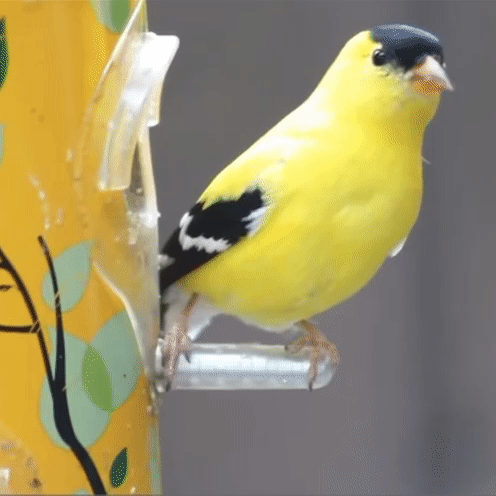
American Goldfinch (Spinus tristis)
Let's kick things off by talking about the incumbent, the American Goldfinch (Spinus tristis). Now, why was the American Goldfinch chosen as the State Bird of New Jersey in 1935? Easy answer: favoritism. The bird was nominated as the only candidate by the New Jersey Audubon Society because...it was their mascot at the time. Yeah. That's it. In reality, the New Jersey State Bird is the New Jersey Audubon Society. And even then, it's officially lost its relevancy, because that's not their mascot anymore. More on that later.
What's actually worse about the goldfinch here is...for some reason, not a lot of New Jerseyans have actually seen them. Part of the reason for this entire series, by the way is this Reddit post, which stoked the fires that had long been simmering deep within my soul. OK, not that deep, but still. Anyway, the header of that post is that the OP had barely ever seen an American Goldfinch, despite being a native. I thought that was insane (and said as much in my comments), because this is a ridiculously common bird, especially for birdwatchers. But, uh...I've looked into since then. And only 0.4% of its global breeding population resides in the state. What's crazy is, this is a common sentiment amongst New Jerseyans. They just...haven't seen this bird. And obviously, that/s not every new Jerseyan, and a lot have reported seeing it. But to be honest...is this bird really worth being called the State Bird of New Jersey?

OK, can we make the American Goldfinch make sense in retrospect? Let's see, they're a highly social finch species throughout the year, living in dense colonies in the spring and summer especially. The males are late breeders with ornate flying displays meant to attract females, and may group territories with other males to defend against predators. And they're an open secondary growth forest specialist that live in the state year-round, including during the breeding season. Which means...well, actually, it means that they're perfectly suited to live in New Jersey, funnily enough.
Hear me out here. There are two things that goldfinches love most: forest clearings and weeds. New Jersey may be 45% covered in forest, but it does have deforestation as a minor problem around its settlements. However, that's not a problem for the goldfinch, who thrives in secondary growth forests that occur as a result of succession. Given an attempt in recent decades to recover New Jersey's forests, this means the goldfinch is a potential symbol of these efforts. Plus, its love of the seeds that come from flowers that are pest plants, like dandelion, thistle, ragweed, and cosmos, make it a potentially attractive bird for gardeners of the state to attract, especially as those plants thrive in open fields during stages of succession!
...YES I'M STRETCHING MORE THAN AN AUSTRALIAN BREAKDANCER WITH A DOCTORATE TRYING TO MAKE A POINT, BUT WHAT ELSE AM I SUPPOSED TO DO WITH THIS MASCOT OF AN ORGANIZATION NAMED AFTER A SLAVE-OWNER???
So...moving on.
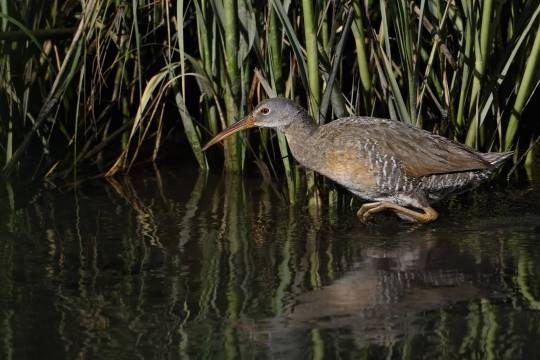
Clapper Rail (Rallus crepitans)
While the majority of natural New Jersey is covered in forest, it still has a fairly important habitat in the form of the saltmarsh. Just to get the definition in place early, a saltmarsh is essentially what it sounds like: a vegetation-dominated coastal biome with salt and brackish water, salt-tolerant grasses and plants, and the animals that depend on such. They're coastline preservers, trapping and binding sediment as it makes its way to and from the ocean, and acting as a major supply for the food web along the coasts. They're incredibly important habitats, and this will not be (and have not been) the last time you've seen them during the State Birds Initiative.
Now, obviously, these habitats are chockful of birds. New Jersey has a few major salt flats along its coast, all of which shelter some major breeding populations of birds. One of these species is the Clapper Rail (Rallus crepitans), which is our eBird-sponsored pick of this poll. Clapper Rails have 13% of their global population in New Jersey saltmarshes, meaning they're quite dependent on this unique habitat, and most of their population breeds in the state. Some people may never have seen or heard of a rail, but in case you're one of those people, just know that they're a smaller semi-aquatic relative of cranes. If you've seen a coot, moorhen, or gallinule, then you've seen a rail! And the Clapper Rail is a crustacean-eating, saltmarsh-loving, new Jersey-dependent example. And that said...it is kinda boring looking to the average person.
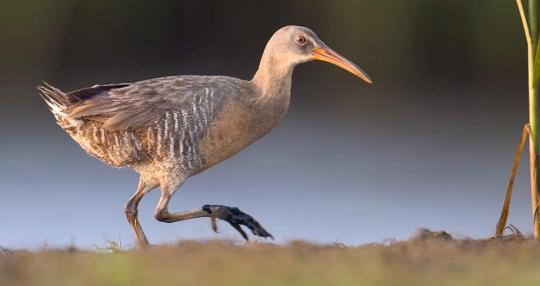
Don't take me wrong! For me, this bird is fantastic, and would actually be a lifer for me, personally. But the average non-birder? Look, in instances like this, I usually tap into the part of my brain my fiancee lives in rent-free, and all I can hear is her shouting "LONG DUCK LONG DUCK" over and over. I love these guys, but I'm not sure they'd resonate with the public. Plus, as far as saltmarshes go, these are good representatives, but I'm not sure they're the best. Are these a good New Jersey representative? Possibly, since they represent a major ecosystem in the state, and that is important. But I'll leave that question to you all. Moving on!

Cape May Warbler (Setophaga tigrina)
OK, onto the category of birds that are named after the state, and New Jersey has one of those! The Cape May Warbler (Setophaga tigrina) is so-named because the first specimen described by Alexander Wilson was collected in Cape May, New Jersey by George Ord. That said, it's certainly a unique warbler, easily recognizable, and dependent upon conifer forests dominated by spruce, which the Pine Barrens are...not. Still, an iconic bird in New Jersey! Except...wait, hold on...ah. It doesn't breed in the state. In fact, after it was described from a Cape May specimen, it wasn't seen in the area again for...a century. So...yeah, it's named after a major location in the state, known for birds at that, and yet it's barely found there?Love this bird, but...maybe think about renaming it one of these days.
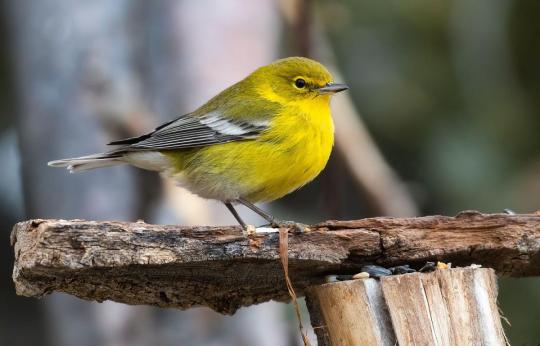
Pine Warbler (Setophaga pinus)
Now, the Pine Warbler (Setophaga pinus), on the other hand, that's a better warbler representative of New Jersey. Well, sort of. To be fair, the Pine Warbler only has 1% of its global breeding population in New Jersey, so the state isn't a bastion or reservoir for the species. However, there is a major reservoir of the species in the New Jersey Pine Barrens, which I'd mentioned earlier. And hey, Pine Barrens, Pine Warbler...slam dunk for representation of the habitat right there. And yeah, that's absolutely relevant to the species as a whole. They live, eat, and breed in pine-dominated forests, exactly like (and including) the Pine Barrens. It's actually listed as a "Significant Congregation" species by the New Jersey Audubon Society.
And as for making a good State Bird of New Jersey? It's a notable bird, even keeping the goldfinch's yellow with white wing bars. It's not terribly difficult to find, especially during the breeding season in areas like the Pine Barrens. And hey, they're even well-known to live with other species, making them an important biodiversity indicator for conservation purposes. Plus, if people go out to look for the Pine Warbler in the wild, they'll likely encounter other species like the Blackburnian Warbler (Setophaga fusca) or the Tennessee Warbler (Leiothlypis peregrina), amongst others. Fostering interest in birdwatching by chance! It works in a conservation sense...but I don't know that it's particularly emblematic of New Jersey, to be fair.
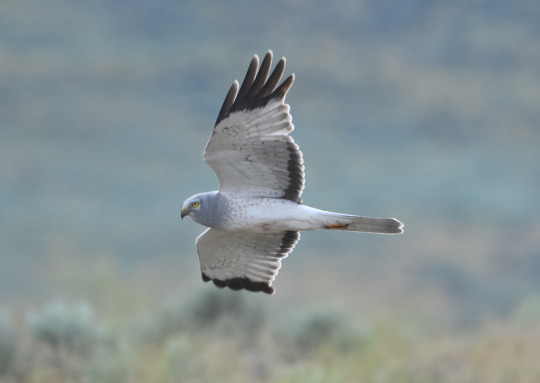
Northern Harrier (Circus hudsonicus)
Now, here's an interesting choice! If the current State Bird, the American Goldfinch, was chosen because it was the mascot for the New Jersey Audubon Society at the time, then by that logic, their current mascot should actually be the State Bird of New Jersey. And so, in that case, may I present to you the current mascot of the NJ Audubon Scoiety, and the next candidate for State Bird...the...is that a Northern Harrier (Circus hudsonicus)? Yeah, looks like it, and some sources I have confirm that's the case. But, uh...why?
Let me be really clear about something first off: I adore the Northern Harrier. Also caleld the marsh hawk, they're a beautiful raptor native to brackish and salt mashes, as well as grasslands and fields, hunting small mammals, insects, and the occasional bird. They're one of the few accipiters that are silent fliers, ambushing prey from above like owls. They even have the disc-like face. They're one of the new North American raptors with sexual dimorphism (the smoky gray male is pictured above, as compared to the brown females), and their iconic coloration has given them the nickname of the Gray Ghost. WHICH IS BADASS. They're also one of the only polygynous raptors, meaning a male can mate with several females in a given season, nesting on the ground and hatching chicks. Because of their unique relationships, some indigenous peoples see them as a symbol of healthy marriage. Finally, these are considered good for agriculture, as they eat rodents and not chicken. I love harriers, they're super neat birds, and it's always a pleasure to see them in the wild. Also, they DROWN THEIR PREY!!! What the hell! That's terrifying!
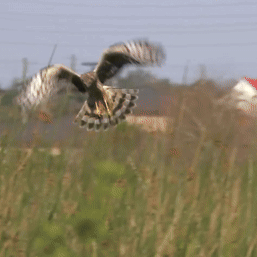
OK, harriers are cool, but do they have a relevance to New Jersey outside of being the logo of New jersey Audubon? Well...they do breed there...barely. But they've been observed doing so, so that counts. They represent key habitats in the state of New Jersey, so that's great. Their certainly charismatic enough (GRAY GHOST), and they've got nationwide conservation concern as an endangered species. So, it has those qualities going for it as the State Bird candidate. We'll see what the poll says. In the meantime, let's move on!
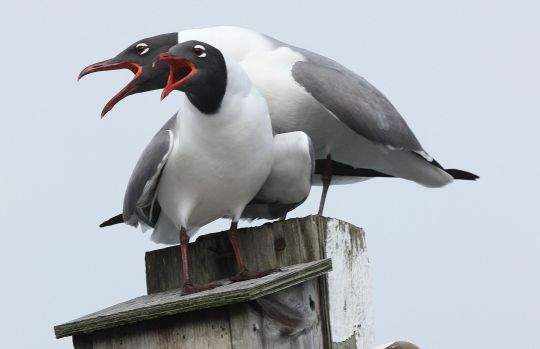
Laughing Gull (Leucophaeus atricilla)
Y'know, my original plan was to put the Ring-billed Gull (Larus delawarensis) in this list as well...and then, I stumbled upon a fun fact. The black-headed cousin of the Ring-billed Gull, and Laughing Gull, is a regular traveler to New Jersey, and in fact has a colony right off of the Jersey Shore, making them a fairly well-known and recognizable resident of an iconic area of the state. But pretty importantly, the species has a pretty massive breeding population in New Jersey. 5% of the breeding population of the species are in southern NJ, which isn’t the bulwark of their breeding population in the USA (that'd be Louisiana, according the eBird Status and Trends), but it's still a significant portion.
That said, the Laughing Gull is a recognizable member of the New Jersey shore community, and I mean the term "community" in multiple contexts. Ecologically, they're omnivorous scavengers that are well-adapted to living in a densely populated state, as well as in saltmarshes and other coastal environments throughout New Jersey. Sociologically, they hang around human settlements so much that they see opportunities in human hands...literally. The Laughing Gulls of the Jersey Shore are pretty notorious for stealing food out of the hands of beachgoers and boardwalk visitors. There are even boardwalk restaurants with signs saying they won't offer refunds if your food is stolen by a gull. They're SO notorious, in fact, that falconers have been hired to use their falcons to drive away these birds. And honestly...that's a shame. After all, the Laughing Gulls are such prominent citizens that humans have had to adjust to them.
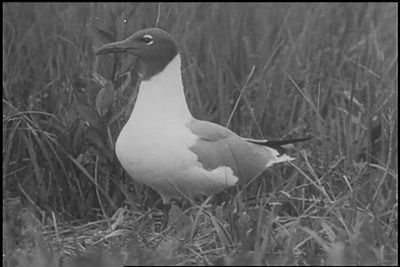
But that said...I'm gonna quote Brian Donahue, the reporter at the end of the video/new report I linked to above...because it's hilarious, and it makes an interesting statement that I think people from New Jersey should think about. Read the quote, but trust that I have a somewhat well-thought out idea supporting it.
Derided as "flying rats" by many, I think it's time to reconsider the Laughing Gull, because if things haters say about Laughing Gulls (they're loud, feisty, there's too many of them... (Interviewee Kathy McCarey): They're rude...they're very demanding...and they come for what they want...I don't like 'em.) ...are the same things haters often say about New Jerseyans. Laughing Gulls are us. They deserve more respect.
youtube
Look, as extremely funny as that point is...there's a point about that statement. That is something that people say about New Jerseyans! They live in a state full of garbage, they're obnoxious and loud, all of that kinds thing. And New Jerseyans love their state as much as anybody else; SO MUCH, in fact, that many people online say they actually love that stereotype, because it means that people STAY OUT OF THEIR STATE. Funny or not, true or not...there's a point there. Laughing Gulls, as with all gulls, have a bad reputation, which is mostly undeserved. They're opportunists trying to feed themselves and their young, who see a smorgasbord of food right in front of them, in their neighborhood! In their place, what would YOU do? Honestly, these guys are a solid contender for that reason alone.
Plus, honestly...it's kinda funny.
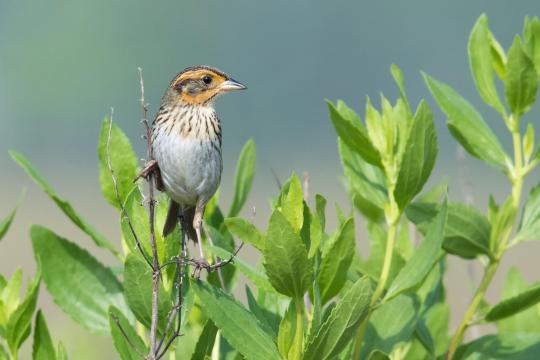
Saltmarsh Sparrow (Ammospiza caudacuta)
Finally, let's look at the conservation focus for this post: the Saltmarsh Sparrow (Ammospiza caudacuta). So, this is a pretty big one, especially when looking at New Jersey. A full 32% of the species' global population breeds in this state, which is, frankly, a MASSIVE proportion of any species. What's more, they're considered an endangered species, which immediately makes this an impressive contender for the State Bird of New Jersey. And as one of the most endangered species in the Eastern USA, not to mention a species of immense scientific interest for ecological and genomic reasons, this bird should get some attention by the public and federal government.
However...and this is a point to be made here...it's not exactly the most iconic bird for non-birders. As a birder who would kill to get this on his lifelist (I AM WORKING ON IT, LITERALLY TOMORROW AS I AM TYPING THIS), this is a prominent bird within certain communities. And to others? Ugh, this is gonna hurt me to say, you have no idea, but...it's a sparrow. It may be a little harder for people to become attached to a sparrow, and even more difficult for people to recognize the Saltmarsh Sparrow specifically.
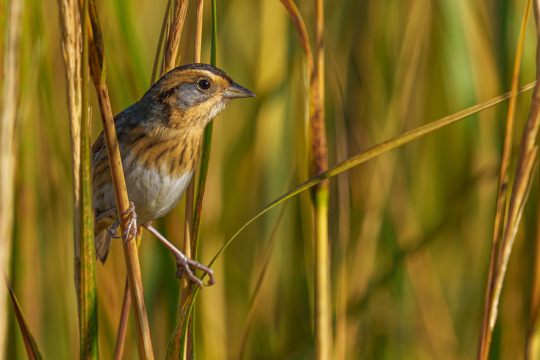
Don't believe that this matters? Do me a favor, bird people. Show your non-bird friends Bird A, Bird B, and Bird C. Ask them how many different species you showed them. I'm willing to bet the especially observant will say 2. The less observant are gonna say 1. And throw in these top two pictures, while you're at it. I'm willing to bet you'll still get a 2 or 3. Because, unfortunately, to many people, sparrows all look pretty similar. And going forward, that's something we'll have to keep in mind: a unique appearance. What makes a bird iconic is also in its uniqueness and identifiability. And sure, maybe I'm not giving the average person enough credit, but we're also talking about children. I've said it before and I'll say it many times over: kids are important targets to consider when choosing natural State Symbols. And I really don't know how many adults could tell the difference between some sparrows, even professionals. And, uh...the Saltmarsh Sparrow is a very important example of this, because it wasn't even a species until the '90s.
Oh, and kudos to those of you who caught on immediately to my little trick up there. Probably a good amount of you noticed it, but if you didn't...there are five species of sparrows shown in this post. The two birds pictured in the post? Different species. Yeah, hearing that now makes that more obvious, but you may not have noticed it immediately. The first bird pictured is indeed the Saltmarsh Sparrow. The second bird, however, is the Nelson's Sparrow (Ammospiza nelsoni), which was once considered the same species as the Saltmarsh Sparrow. Dirty question, I know, but it's also found in New Jersey. Not a breeder there, but it's enough to cause a bit of confusion. See what I mean?
Oh, as for the rest, Bird A is LeConte's Sparrow (Ammospiza leconteii), Bird B is a Savannah Sparrow (Passerculus sandwichensis), and Bird C is a Grasshopper Sparrow (Ammodramus savannarum).
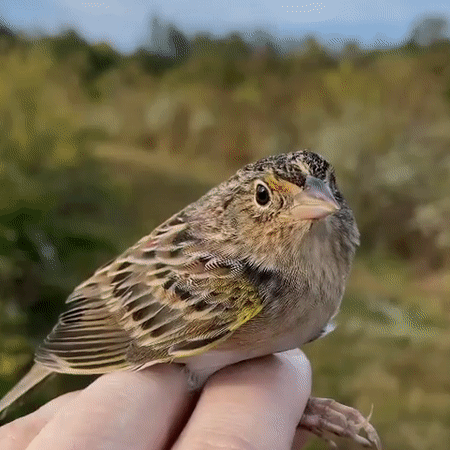
Please understand, bird-peeps: I hate making this argument. Genuinely. The New World sparrows are a wonderful group, and a really fun one to play around with and hunt down as a birder. And don't worry, sparrows will be getting a mention in my personal list. But as for the State Bird? I'll let you all decide.
And with that, that's the end of this post! I miss any big ones? Make any leaps a bit too big? Feel free to let me know! In the meantime, stay tuned for State #4 - Georgia! Wait...wait, the fourth state to be admitted into the Union was Georgia? Huh. Go figure.
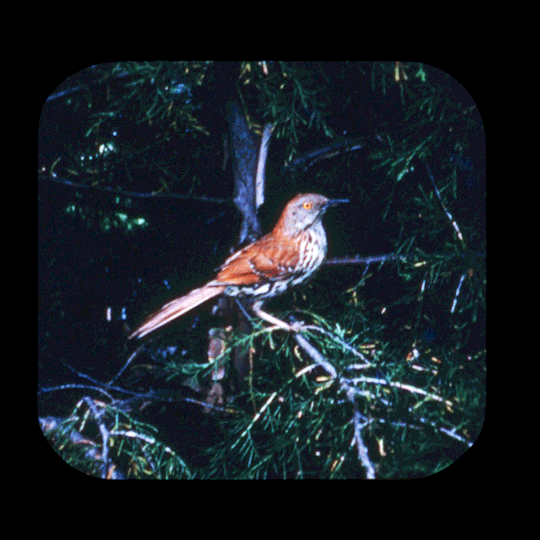
See you next time, and happy birding!
Introduction to the State Birds Initiative
1. Delaware - Poll | Results 2. Pennsylvania - Poll | Results 3. New Jersey - Poll | Results 4. Georgia - Poll | Results 5. Connecticut - Poll | Results 6. Massachusetts - Poll | Results
#birds#bird#state bird initiative#state birds initiative#birdwatching#bird watching#birding#birders#black birder#state bird#new jersey#birdblr#birblr#american goldfinch#eastern goldfinch#spinus tristis#saltmarsh sparrow#sparrow#golfdinch#ammospiza#laughing gull#gull#seagull#northern harrier#raptor#clapper rail#rail#rallus#cape may warbler#cape may
138 notes
·
View notes
Text
Mini-poll: Which of these birds that I've worked with do you think is the coolest?








It's my birthday so I'm doing a poll about me (sorta). I've worked with these birds in some form or capacity, whether it was for my live-capture pest removal job, nest searching and monitoring, or if they were just common birds to band at a station I've worked.
Image Sources: House (Mark Sak), Catbird (Peter Hawrylyshyn), Saltmarsh (Ryan Schain), Nelson's (Will Sweet), Wren (James Tometta), Jay (Mike Miller), Vireo (Bob Walker), Warbler (Bryan Calk)
#personal#personal poll#house sparrow#gray catbird#saltmarsh sparrow#nelson's sparrow#nelsons sparrow#house wren#northern house wren#pinyon jay#gray vireo#golden cheeked warbler#i love these guys equally but i do love some of them more lol#i will wax poetic abt the sharp-tailed sparrows and gray vireo#3 day poll
26 notes
·
View notes
Text
BOTD: Saltmarsh Sparrow

Photo: Liam Wolff
"A bird of the coast, named for the spiky tips on its tail feathers (which it shares with several related kinds of sparrows). Saltmarsh Sparrows have an unusual mating system for a songbird, with males simply roving about looking for females rather than defending a nesting territory."
- Audubon Field Guide
#birds#saltmarsh sparrow#birds of north america#north american birds#sparrows#passerines#birds of the us#birding#bird watching#birdblr#birblr#bird of the day#Ammospiza caudacuta
122 notes
·
View notes
Text

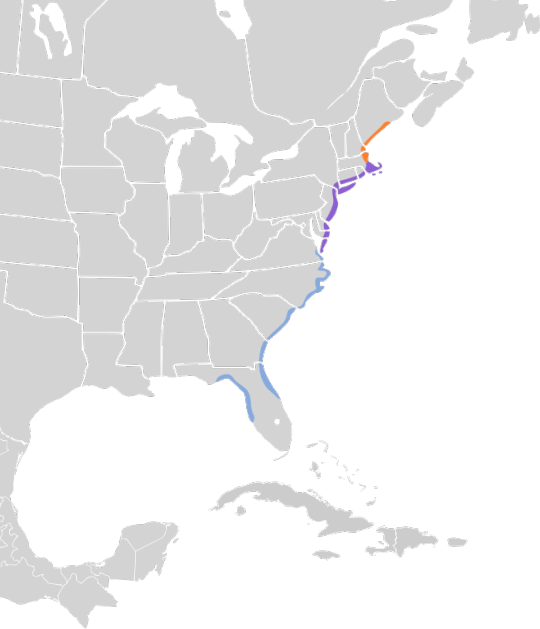
Photo source
Map source
58 notes
·
View notes
Note
Can you think of a better bird for Rhode Island?
My pick for Rhode Island might not be super popular since it’s a visually unexciting bird to some, but I would have the Saltmarsh Sparrow as my selection. With RI being the ocean state, I think this tidal bird would be appropriate. A little bird for a little state! The Saltmarsh sparrow is in a lot of trouble conservation-wise (similar to grasshopper sparrow in Florida) and many people in Rhode Island are moving heaven and earth to try and save them. I love RIR as a chicken breed but the Saltmarsh Sparrow is a native bird that could really use some good press.
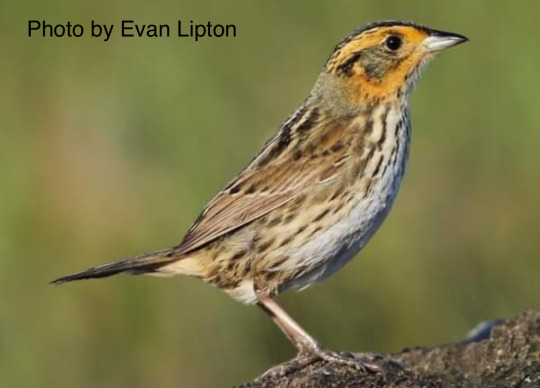
90 notes
·
View notes
Text

Bri Benvenuti, a technician with the U.S. Fish and Wildlife at the time this photo was taken, holds an adult saltmarsh sparrow. Benvenuti was surveying the bird's habitat on Monomoy Island in Chatham, Massachusettes. Monomoy Island is one of the few remaining intact salt marsh ecosystems in New England and provides a good example of how these ecosystems are supposed to function.
Excerpt from this story from this story from National Geographic:
Crouching, Deirdre Robinson gingerly moves her hands around swirling tufts of grass, feeling for an increase in density. If she’s lucky, the grass will give way to reveal a woven canopy of grasses—under which will be a clutch of precious eggs.
“It’s like a eureka moment,” says Robinson, a co-director of the Saltmarsh Sparrow Research Initiative (SSRI), as she recalls the adrenaline rush of discovering a saltmarsh sparrow nest at Jacobs Point Salt Marsh in Narragansett Bay, Rhode Island.
With an orange-buff face and streaky brown and gray plumage, the saltmarsh sparrow has a tremendous burden—to survive and reproduce in the ever-changing interface of the tidal marsh. Found only along the Atlantic coast, it solely breeds in the salt marshes stretching from northern Virginia to Maine, constructing their nests in the grasses above the tide line. Depending on the whims of the tides, the nests could be inundated, sending the eggs swirling into the rush of water, and lost to the wetlands.
In their habitat, floodwaters rise higher than the sparrows’ nests about once every 28 days. This 28-day window allows the female sparrows just enough time to build their nests, lay their three to five eggs, incubate them, and then feed and protect the nestlings until they leave the nest at nine or 10 days old, just before their nests are flooded. The timing is so tight that the nestlings often climb to safety in the vegetation above the nest to avoid drowning at the time of peak tidal height.
The saltmarsh sparrow is now facing these fatally high tides more often, putting them in a precarious ecological spot. The Atlantic Coast’s wetlands are being swallowed by sea level rise, losing three millimeters of land per year in the last century. As a result, saltmarsh sparrows may soon be added to the endangered species list.
But even with such federal protections, scientists are merely trying to postpone their extinction. Studies predict that the species is doomed to vanish from its teeming, briny world as early as 2035 or 2050.
“If the bird can’t complete its nesting cycle within the windows of opportunity between monthly peak tides, that triggers extinction. The higher the tides, the narrower the window for these birds to nest,” says Jim O’Neill, who along with Robinson, is a co-director of the SSRI, based in Rhode Island.
25 notes
·
View notes
Text

Saltmarsh Sparrow (Ammospiza caudacuta)
© Brian Sullivan
29 notes
·
View notes
Text

Saltmarsh Sparrow
55 notes
·
View notes
Text

Seaside Sparrow, Ammospiza maritima
93 notes
·
View notes
Text
daily birds week 40!


eastern wood pewee + purple finch


blue-and-yellow macaw + saltmarsh sparrow


white-ruffed manakin + red-capped robin

great crested grebe
89 notes
·
View notes
Text
Little boring birds deserve all the love and attention in the world 🥺🥺
So time for a blatant generalization- in North America, a lot of little brown birds often have really pretty songs, or more specialized mating displays since they aren't using color to attract a mate. Or, like the Bachman's sparrow, they may live in extremely specialized areas (i.e. loblolly pine forests with grassy, shrubby patches).
I find that most people obsessed with some little boring-looking bird have either worked with it, found its song beautiful, or seen its mating display. Or, if they really do like the coloration, it may be an appreciation of pattern. I swear, no one does beautiful, intricate patterns like a bird trying to blend in with grass.
Anyways here's a picture of Saltmarsh Sparrow (left) and Nelson's Sparrow (right). They're more like mice than birds and I would give my left leg to work with them again.

[Photo ID: two sparrows held safely in photographer's grip. the bird on the left is a Saltmarsh sparrow, and has an orange face pattern and a bicolor bill, black and pinkish-yellow. It has a buffy-orange and black striped chest and a white belly. The bird on the right is a Nelson's sparrow and has no discernable pattern whatsoever. It's brownish-gray. It's bicolor bill is black and blue. Both birds are perfect. /end ID]
All banding, marking, and sampling is being conducted under a federally authorized Bird Banding Permit issued by the U.S. Geological Survey's BBL.
I love birdwatchers they’re like “I just saw my ALL TIME FAVORITE BIRD SPECIES! I’ve always dreamed of seeing one in the wild! I am ECSTATIC!” and it’s the most boring looking little brown bird you’ve ever seen.
51K notes
·
View notes
Text
What's the Bird?
Location: Coastal Texas
Date: Summer
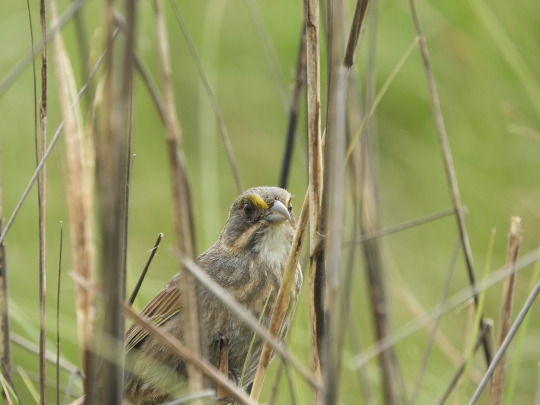
We ask that discussion under questions be limited to how you came to your conclusion, not what your conclusion was.
Happy Birding!
Keep the game alive! Submit a bird HERE
Bird-555 graciously submitted by @nohriantomatoes
32 notes
·
View notes
